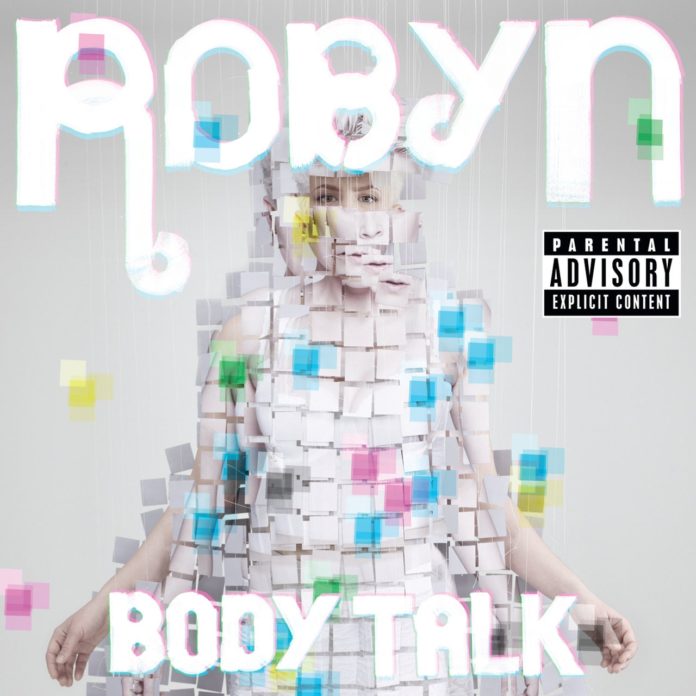When Texas-based, Mexican-born artist Alan Palomo, formerly of the projects Ghosthustler and VEGA, unleashed Neon Indian’s debut album, Psychic Chasms, in September, the summer of chillwave got its full-fledged album-length statement. Surreal singalongs like “Deadbeat Summer” and “Should’ve Taken Acid With You” encapsulated the slacker spiritual longing (this guy even underachieved at doing drugs!) that seemed to be in the air that year. Toro y Moi’s Causers of This in early 2010 rounded out this very-online genre with nods toward the expressive hip-hop beats of late producer J Dilla. In hindsight, chillwave may have been the sound of early, idealistic internet culture staving off a panic attack just long enough to enjoy one last season in the sun.
THE SWEDISH INVASION
Pitchfork had long made some effort to cover music from beyond North America and the UK, but by the mid-’00s, acts such as Love Is All, Jens Lekman, and “Young Folks”-whistling Peter Bjorn & John had brought Sweden as close to the American indie zeitgeist as Britpop might have seemed a decade earlier. Pitchfork’s disdain for Eurodance was long gone, too: Norway’s Annie topped our Top 50 Singles of 2004 list with her club-thumping “Heartbeat.”
Robyn’s return in 2010, over three EPs culminating in her fifth album, Body Talk, was a long-awaited victory celebration from an underappreciated pop innovator. Marc Hogan’s review of Body Talk acknowledged Robyn’s mastery of a type of pop that borrowed from the indie world and sounded big and mainstream but was, for a time at least, more of a cult phenomenon.
KANYE GOES SUPERNOVA
In 2010, no one else was as ambitious, as ridiculous, as mind-blowingly extra (in a good way!) as Kanye West. After being shunned by much of polite society following his infamous Taylor Swift stage crash at the 2009 VMAs, the backpack rapper turned arena star turned Auto-Tune futurist had a lot of love to win back with his fifth album. So he bundled the best aspects of his previous work, wrapped it all up in a sumptuous, star-studded package, and called it My Beautiful Dark Twisted Fantasy.
Leading up to the record, Kanye borrowed from his friend and collaborator Lil Wayne’s playbook by releasing a string of songs for free online, building up plenty of goodwill in the process. (Three of those—future album pillars “POWER,” “Monster,” and “Runaway”—were quickly named Best New Track.) He also harnessed the excitement of social media in a time when social media was something that people were actually excited about, unleashing unforgettable tweets that were as excessive as they were neurotic, such as the all-time classic, “I hate when I’m on a flight and I wake up next to a water bottle next to me like oh great now I gotta be responsible for this water bottle.”
It all culminated in a record and a moment that somehow blew past the overwhelming hype. In a review by Ryan Dombal, Pitchfork awarded the album an extremely rare 10.0 the day of its November release, as it became the first new album to hit that pinnacle since Wilco’s Yankee Hotel Foxtrot in 2002. Ecstatic fans and perplexed haters had plenty of thoughts, conspiracy theories, and picayune gripes about the score (“really pitchfork? a 10 for kanye? sure the album may rock, but he is a stain. and stains should not be put on such a pedestal,” went one), and thanks to Twitter, they had a new place to put every last word.
FRANK’S FIRST CLASSIC
Not only was Frank Ocean’s major-label debut the first capstone on Odd Future’s rise to the mainstream, but it remains one of the best debuts of this century. When Frank released the record one week earlier than planned, there was a shock of communal excitement. It was as if everyone on Twitter, message boards, and text messages was realizing in unison that this was without question an album destined for the pantheon of music. It was important to recognize Frank’s outsized contribution to pop, R&B, and rap, and Ryan Dombal did so in a review he turned around in about 48 hours. It included connecting songs like “Thinkin Bout You” to Frank Ocean’s now famous Tumblr note, where he opened up about his sexuality, capturing, in essence, his fluidity. Everything about Frank felt as if it was rushing forward in time at an incredible pace. This review wanted to capture that blur of a feeling, of an artist claiming something brand new for himself.
CYBERPUNK 2012
When her third album was released in 2012, Claire Boucher stood with one platform boot in the underground and another in the mainstream. At the time, Visions’ post-everything digital maximalism served as a link between the indie-approved electro-pop of the likes of Robyn and Lykke Li and the Tumblr-era avant experimentations of, say, Oneohtrix Point Never or Crystal Castles. (The album would go on to help lay the groundwork for the next generation of hyperpop bedroom producers.) And Grimes’ cyberpunk fashion and controversy-courting social media presence acted as a bridge between Gorilla Vs. Bear and the MTV VMAs red carpet. But the biggest impact that she would have on the decade that followed would be in her manifestation of a future in which being Extremely Online would be elevated to a way of life.







